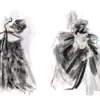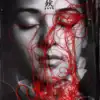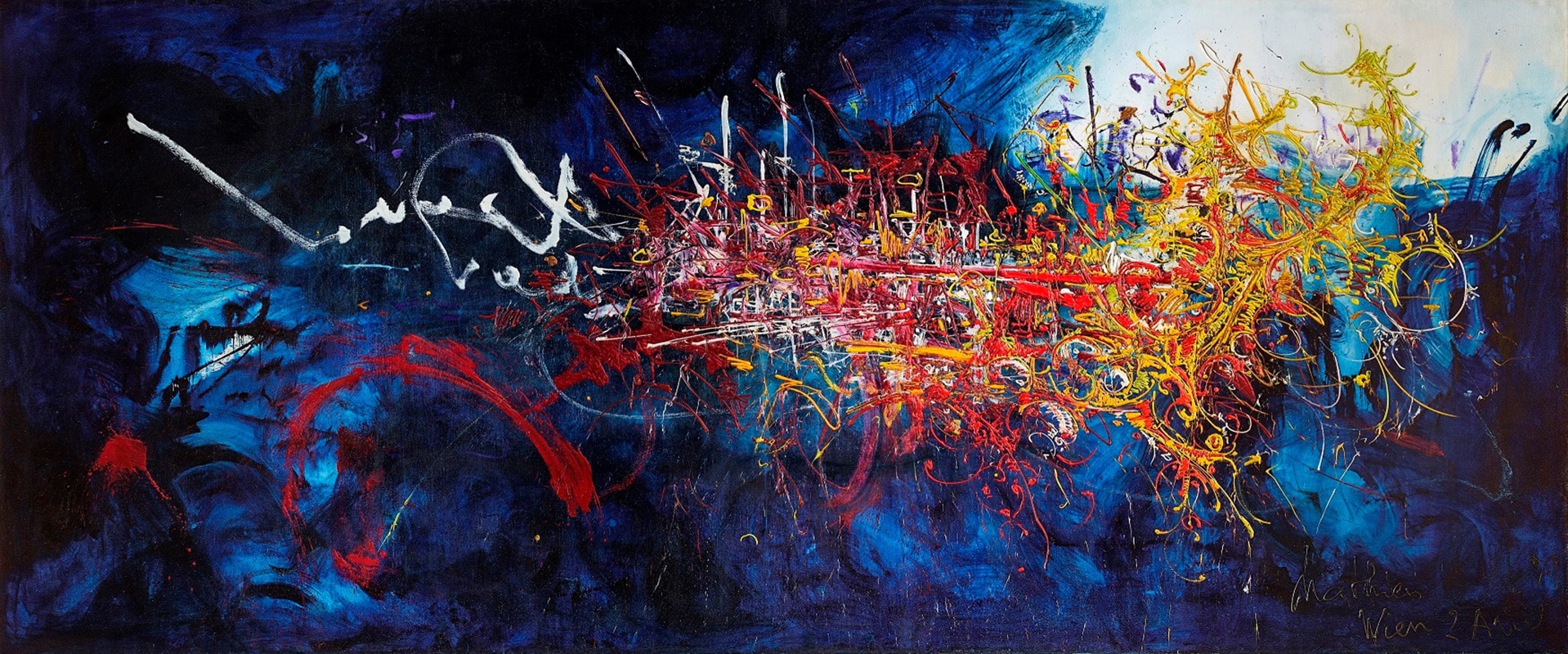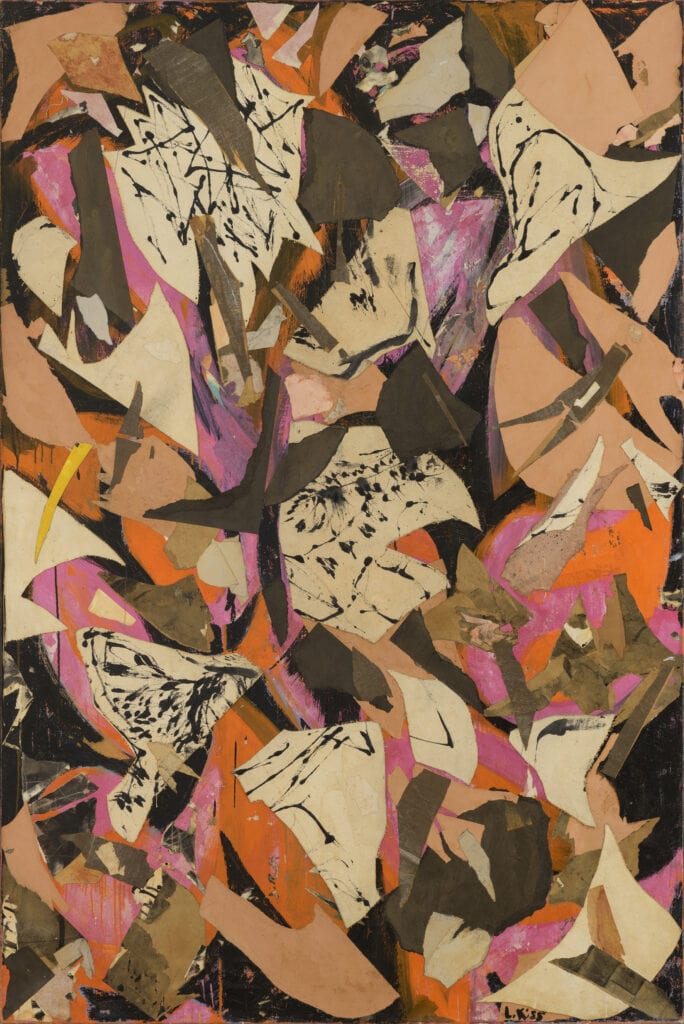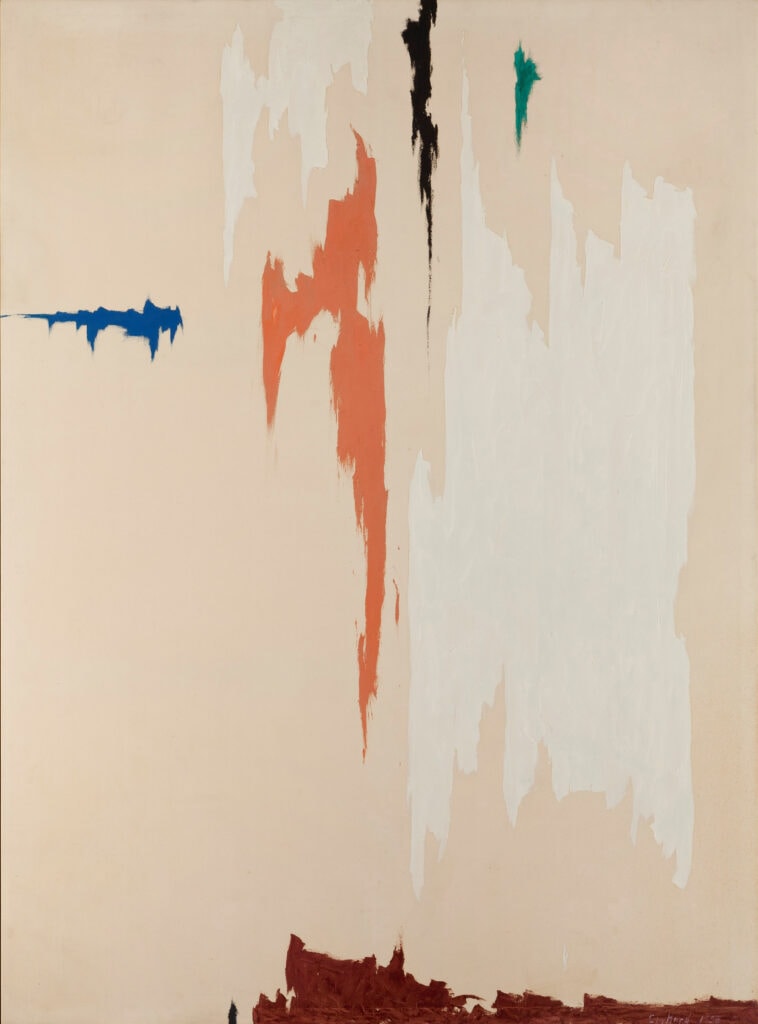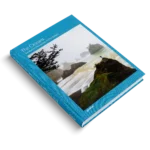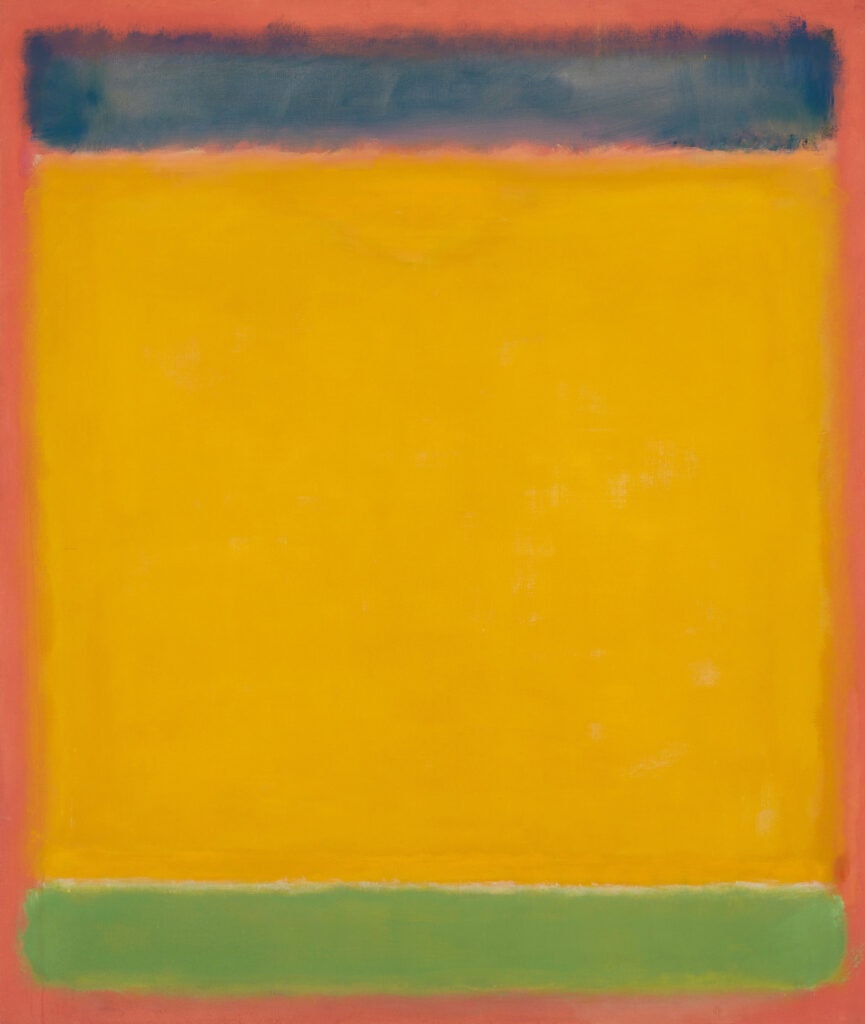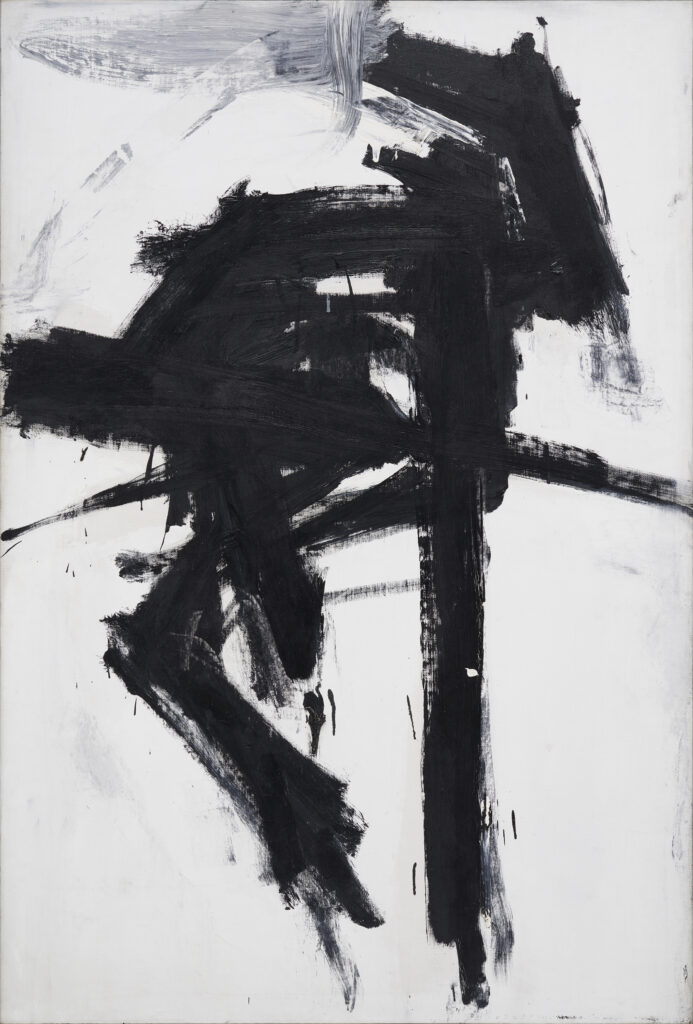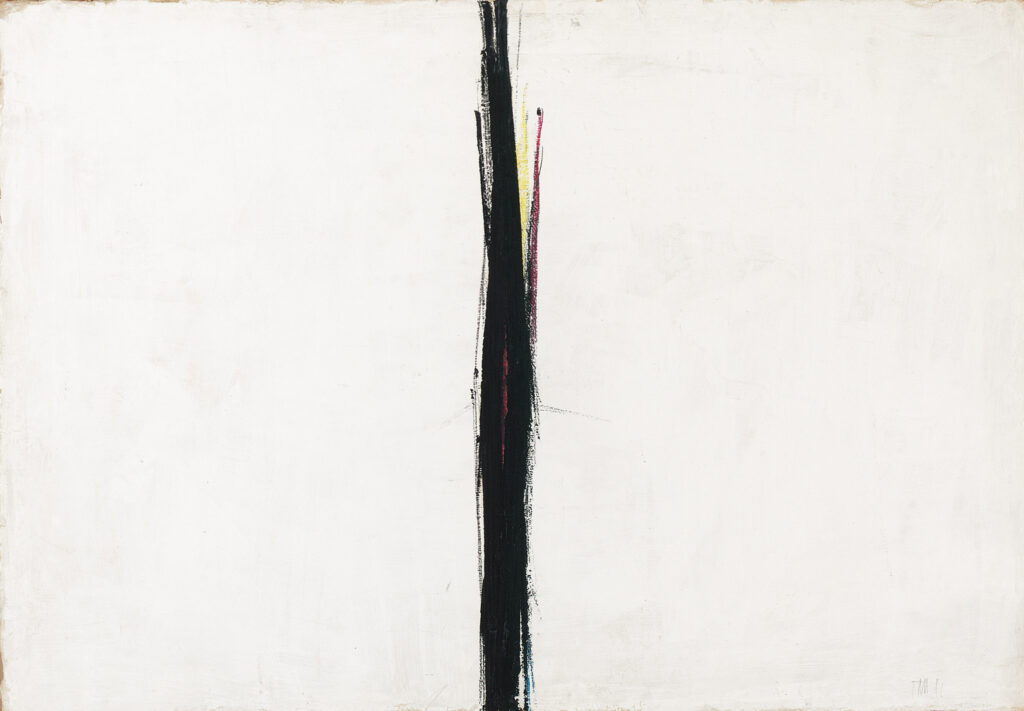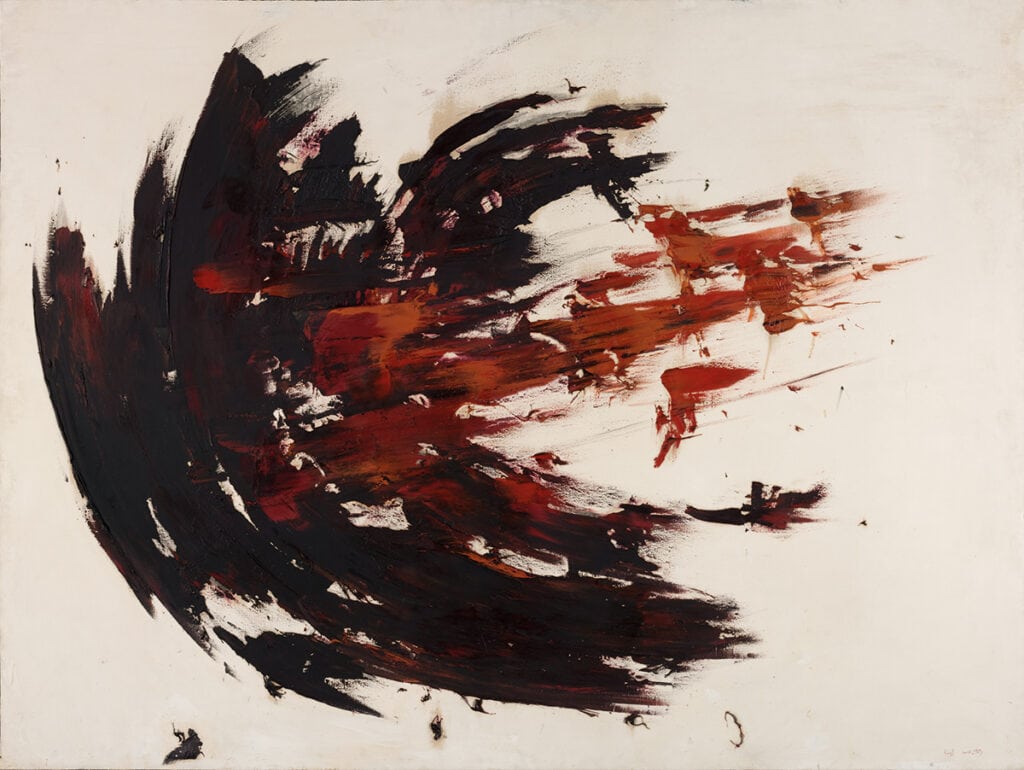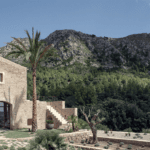Jackson Pollock to Maria Lassnig: 15.10. 2022 – 22.1. 2023 – The end of the Second World War also marks a turning point in modern painting: the ALBERTINA MODERN’s autumn exhibition is dedicated to Abstract Expressionism of the New York School, which celebrated a brilliant triumph in Europe after 1945. As an expression of individual Freedom gives the spontaneous artistic gesture great meaning and symbolic charge.
Competition of ideologies
With the victory over fascism in Europe, painting goes completely new ways, art accomplishes a liberation from everything known to date. Abstraction becomes the global language of free world: “The European avant-garde artists in American exile are making New York, alongside Paris becomes a centre that sets new standards: with Abstract Expressionism in the USA and the Informel in Paris, a young generation of artists turned away from the styles of the interwar years. Instead of figurative representation or geometric abstraction, she pursues an impetuously expressive, hitherto unheard-of approach to form, colour and material. The Subconscious becomes the basis of Pollock and Rothko’s art. The surrealist technique of the Automatism becomes the starting point of a dynamic-expressive and spontaneous painting”, says ALBERTINA MODERN Director and curator of the exhibition Angela Stief.
The exhibition clearly illustrates the creative interplay between Abstract Expressionism and Informal Painting in Transatlantic Dialogue from the Middle of the 1940s year: “Contrary to Nazi art and socialist realism, US abstraction becomes part of of the ideological competition over the question of who represents the better society: the Autonomy of art with its complete freedom and abstinence from reality or the socialist realism in the service of propaganda, which became the official art doctrine of the communist countries and the Soviet Union”, says Klaus Albrecht Schröder, Director General of the ALBERTINA.
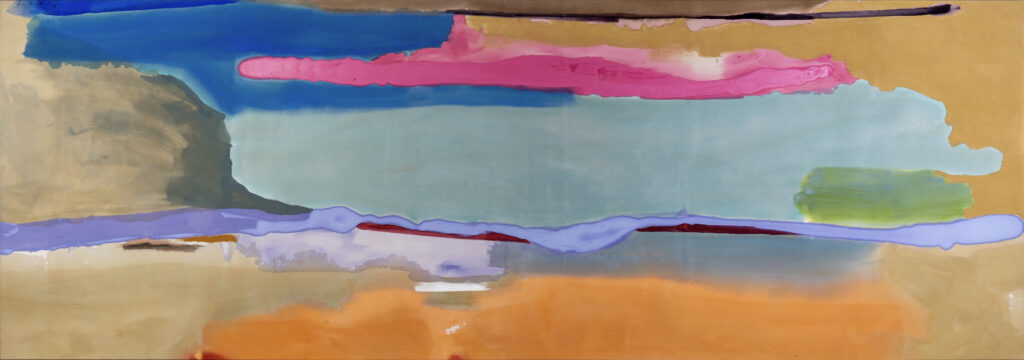
Victory of individualism
Artists such as Jackson Pollock, Lee Krasner, Franz Kline and Joan Mitchell find an intersubjective form of expression in action painting. In addition, the large-format, two-dimensional colour field paintings by Mark Rothko, Barnett Newman, Robert Motherwell and Clyfford Still, for example, create a meditative space for examining the basic questions of human existence. The surrealist technique of automatism can also be found in the emotional, energetic and dynamic works.
Methodology and technique break new ground here: large formats of up to six or more metres in length, as in Georges Mathieu’s work, are intended to trigger a new understanding in the viewer. The audience becomes part of the picture, is supposed to grow together with it and be encouraged to self-reflect. The works show an immediate expression, are created in dynamic, energetic processes and use new techniques such as action painting or colour field painting. Colour is applied by spraying, dripping or pouring.
A show of superlatives
On display in the ALBERTINA MODERN on 1,500 square metres are 85 works – some are to be seen again for the first time in decades – by 33 artists: including international Greats like Jackson Pollock, Joan Mitchell, Mark Rothko, Mary Abbott, Perle Fine, Sam Francis, Helen Frankenthaler, Grace Hartigan, Hans Hartung, Hans Hofmann, Wolfgang Hollegha, Franz Kline, Elaine de Kooning, Lee Krasner, Maria Lassnig, Morris Louis, Georges Mathieu, Robert Motherwell, Ernst-Wilhelm Nay, Barnett Newman, Markus Prachensky, Arnulf Rainer, Judit Reigl, Hans Staudacher and Clyfford Still in dialogue.
The exhibition was created in cooperation with the Museum Barberini, Potsdam, with generous Support of the Levett Collection, the ASOM Collection, the Fondation Gandur pour l’Art & Genève.

